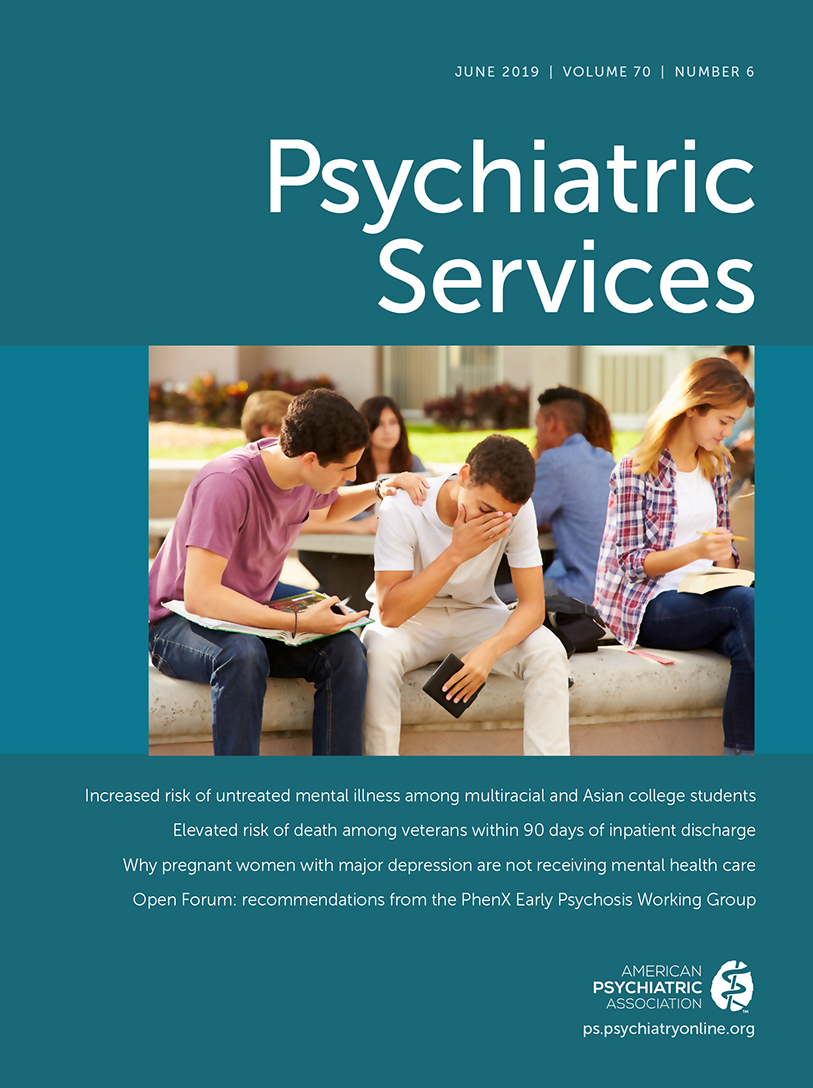Overcoming Barriers to Care for College Students
The Chen et al. article in this issue focuses on the mental health of college students (1), drawing from the National College Health Assessment (NCHA) administered by the American College Health Association. The NCHA, the Healthy Minds Study, and the World Health Organization’s more recent World College Mental Health International Student Initiative constitute primary sources of information about college students’ psychiatric symptoms, attitudes, and behaviors. In this population, mental health and substance use are major sources of morbidity and mortality, with accidents (mostly precipitated by substance use), overdoses, and suicide reported to be the leading causes of death.
The NCHA data, Chen et al. report, show alarming rates of emotional distress, with high percentages of students reporting past-year hopelessness, feelings of sadness, anxiety or loneliness, experiences of being overwhelmed or angry, and suicidal ideation. Although differences by race-ethnicity, a focus of the study, were not large, black college students notably reported lower levels of hopelessness, feeling overwhelmed, loneliness, sadness, feelings of anxiety or depression, episodes of nonsuicidal self-harm, and suicidal thoughts compared with the total cohort of students. Only reports of anger and suicide attempts among black students were slightly higher than the overall average.
These findings (consistent with the findings in the Healthy Minds Study, which is based on student responses to rating scales) raise the intriguing possibility that because of the challenges facing many black students on the path to college, those who gain admission and persist may be more emotionally resilient than other college students.
Nevertheless, there is another notable discrepancy in the NCHA data that paints a more concerning picture. Whereas rates of mental health–related problems among black students were slightly lower than average, their rates of “diagnosis and treatment” were much lower. Chen et al. correctly interpret that this finding suggests that black students are seeking clinical care at rates well below their apparent need (this lower rate of clinical care is also consistent with the findings of the Healthy Minds Study). Clearly, then, there is a gap between need for treatment and either the ability to access care or openness to seeking it.
Consider, then, that when black students acknowledge emotional distress, they are getting mental health care less often than one would hope or expect (and note that suicide attempts in this group are higher than average—so although black students may be slightly healthier as a group than the total cohort of students, they still have significant distress and risk). As the authors note, campus mental health professionals and higher education administrators need to do a better job making certain that there is adequate access to care for all college students, particularly those who are members of minority groups or who may feel marginalized, and to find ways to make campus services both more inviting and culturally sensitive and responsive. Universities need to be more thoughtful about “marketing” clinical services to the diverse range of students on their campuses.
Considering the disjuncture between symptomatic distress and help seeking, I add a final observation from the NCHA data that Chen et al. do not discuss but which has important implications for encouraging college students (and young people in general) to consider mental health care. The survey asks whether respondents identify as having a “psychiatric condition,” and consistently about one-third as many students endorse this item as endorse having received a diagnosis of or treatment for depression, anxiety, or other common mental health issues. Clearly, many students—even those receiving care—do not see themselves as having a psychiatric condition or illness. I would suggest that focusing on distress or emotional pain may be more fruitful than focusing on diagnosable conditions or psychiatric illness when discussing help seeking. Consider that people most often visit their physician because they are experiencing pain or a similar complaint and are seeking relief, not necessarily diagnosis of a condition. Young people are likely to be much more comfortable with and engaged in treatment if the focus is on how they are experiencing their distress and how to understand, manage, and relieve it, regardless of whether it is in the context of a diagnosable condition.
1 : Psychiatric symptoms and diagnoses among US college students: a comparison by race and ethnicity. Psychiatr Serv 2019; 70:442–449Link, Google Scholar



